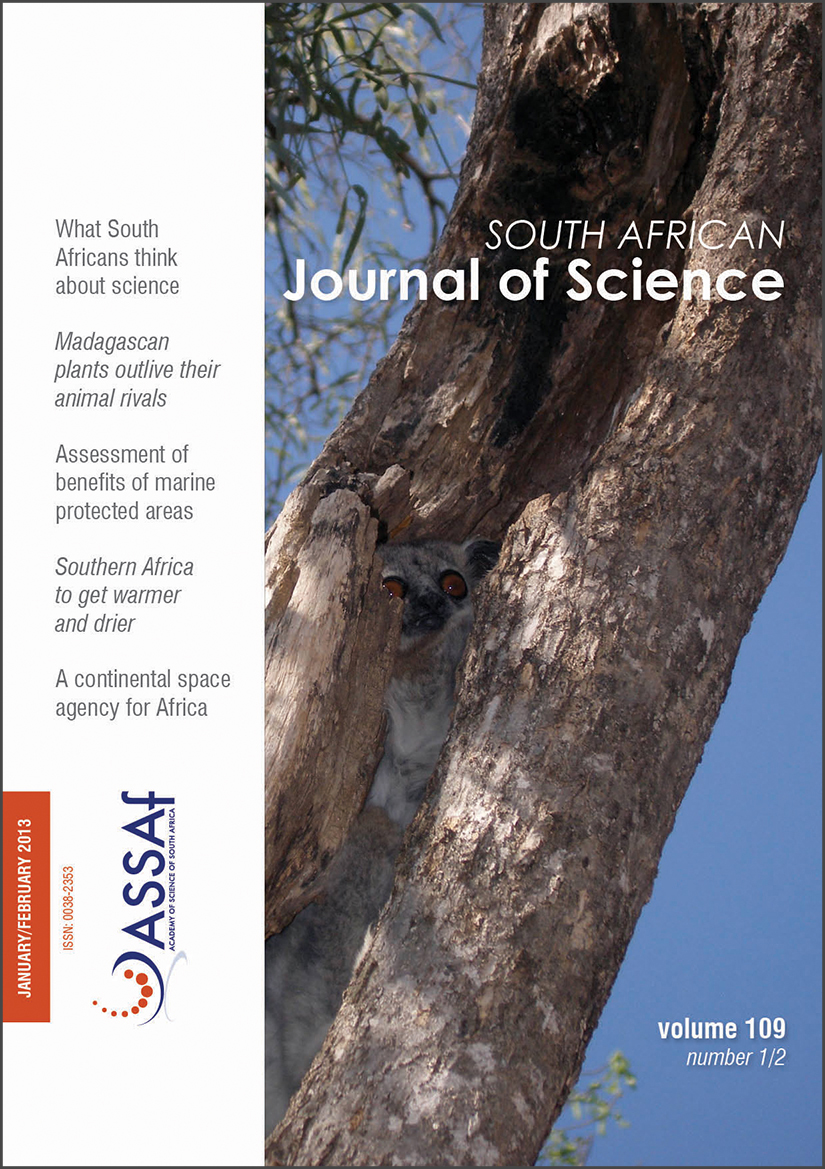Sustainable waste management by production of activated carbon from agroforestry residues
DOI:
https://doi.org/10.1590/sajs.2013/1077Keywords:
activation, pyrolysis, characterisation, removal, adsorptionAbstract
Agroforestry waste presents a problem for disposal and negatively impacts on the environment if left to rot or burn. The aim of this study was to reduce environmental problems associated with agroforestry waste by promoting the innovative use of such waste in the production of activated carbons (ACs) using a low-cost production technique, and ultimately delivering more affordable water and effluent treatment adsorbents. Four varieties of ACs from four different agroforestry materials – pine (Pinus contorta) cones (PC), Abies (Abies cilicica) seeds (AS), maple (Acer ginnala) seeds (MS) and peach (Prunus persica) stones (PS) – were prepared by single-step steam pyrolysis and characterised. The raw materials were evaluated for AC yield while the respective ACs were evaluated on the basis of iodine number, phenol specific area, ash content, pH, moisture content and removal of metal ions, nitrates and sulphates from aqueous solution. The AC yields for PS, PC, AS and MS were found to be 23.0%, 18.0%, 17.8% and 14.6%, respectively. The yield for PS (23%) is within the specified commercial limits of 20% to 40%. The phenol specific areas of the ACs ranged between 381 m2/g and 415 m2/g higher than the commercial lower limit (300 m2/g) generally specified. The ACs also showed the capacity to remove heavy metal ions from their aqueous solutions. Removal of both nitrates and sulphates in raw water was greater than 50%. Although no quantitative analysis has been performed to date, it is envisaged that the production of AC from agroforestry wastes can contribute to the sustainable management of environmental pollution by these residues and the concomitant delivery of cheaper adsorbents.
Published
Issue
Section
License

All articles are published under a Creative Commons Attribution 4.0 International Licence
Copyright is retained by the authors. Readers are welcome to reproduce, share and adapt the content without permission provided the source is attributed.
Disclaimer: The publisher and editors accept no responsibility for statements made by the authors
How to Cite
- Abstract 477
- PDF 770
- EPUB 159
- XML 216












.png)